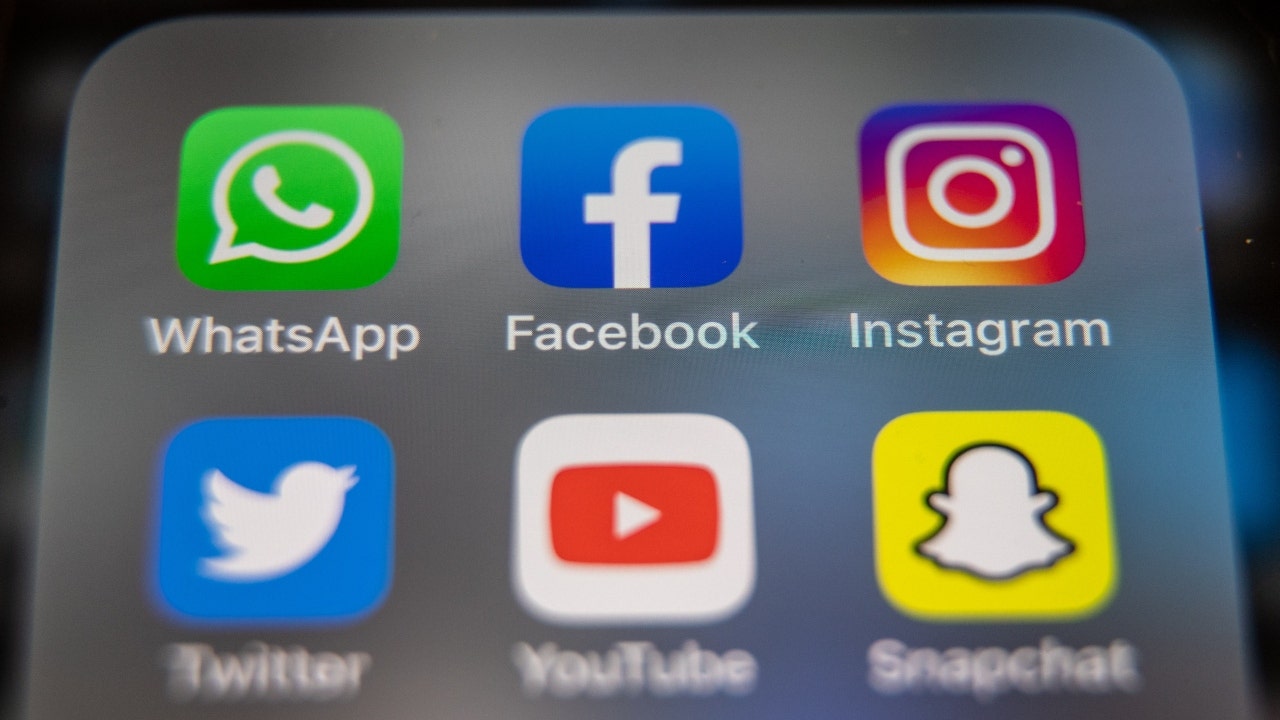New research presented by neuroscientists at the University of North Carolina at Chapel Hill found young adolescents who habitually checked social media showed a distinct neurodevelopmental trajectory within the brain.
Their sensitivity toward social rewards and punishments from peers heightened over time in comparison with those who engaged in moderate or low checking behaviors.
The three-year study of 169 sixth- and seventh-grade students from three public middle schools in rural North Carolina was published Tuesday in the journal JAMA Pediatrics.
The authors used functional magnetic resonance imaging (MRI) from recruits who were between the ages of 12 and 15.
HOW TO AVOID BEING DUPED BY ROBOCALLS NOW AND FOREVER

In this photo illustration, a Facebook logo is displayed on a smartphone.
(Photo Illustration by Thiago Prudencio/SOPA Images/LightRocket via Getty Images)
The participants reported the frequency at which they checked Facebook, Instagram and Snapchat just once at the beginning of the study and were split into groups according to how often they checked those feeds.
Their answers ranged from less than once to more than 20 times a day.
Subjects received full brain scans as they played a computerized game that delivered rewards and punishment in the form of smiling or scowling peers.
At around the age of 12, during what the authors pointed out was a critical developmental period, habitual users already showed lower sensitivity to social anticipation.
“The results of this cohort study suggest that social media checking behaviors in early adolescence may be associated with changes in the brain’s sensitivity to social rewards and punishments. Further research examining long-term associations between social media use, adolescent neural development and psychological adjustment is needed to understand the effects of a ubiquitous influence on development for today’s adolescents,” the study said.

In this photo illustration, the logos of Facebook, WhatsApp and Instagram are displayed on a smartphone screen March 14, 2022, in Glastonbury, England.
(Matt Cardy/Getty Images)
However, there were some limitations to the study. Since differences in neural trajectories already existed between participants with habitual and nonhabitual checking behaviors at the start of the study, it was difficult to determine whether social media use prior to data collection caused these distinct neural trajectories or if preexisting differences in neural activation placed some youth at risk for more habitual checking behaviors.
GOOGLE CHROME’S ‘INCOGNITO’ MODE MIGHT NOT KEEP YOU SO HIDDEN
“We can’t make causal claims that social media is changing the brain,” Eva Telzer, an associate professor of psychology and neuroscience at the University of North Carolina, Chapel Hill and one of the authors of the study, told The New York Times.

In this photo illustration, a mobile phone screen displays the Snapchat logo in front of a keyboard in Istanbul, Turkey, Feb. 24, 2020.
(Muhammed Enes Yildirim/Anadolu Agency via Getty Images)
However, she explained that “teens who are habitually checking their social media are showing these pretty dramatic changes in the way their brains are responding, which could potentially have long-term consequences well into adulthood, sort of setting the stage for brain development over time.”
That includes hypersensitivity to feedback from peers.
The Times notes that the findings do not capture the magnitude of the brain changes — just their trajectory — and that authors said it remains unclear whether the changes are beneficial or harmful.
CLICK HERE TO GET THE FOX NEWS APP
“This is the new norm,” Telzer added. “Understanding how this new digital world is influencing teens is important. It may be associated with changes in the brain, but that may be for good or for bad. We don’t necessarily know the long-term implications yet.”






